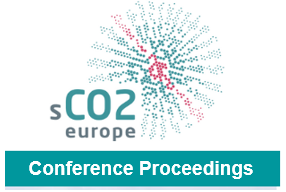Exergetic and Entropy Analysis of the PCRC and RCMCI Brayton Cycles Using s-CO2 Mixtures : Case Study: Marine Applications
Brayton cycle using supercritical carbon dioxide (s-CO2) as a working fluid is a high-efficiency trend technology that has been an understudy for improvement. The performance of the cycles explains with a thermodynamic analysis that accounts for two aspects: on one side a general trend in their behavior and on the other the effect of the irreversibilities, especially the irreversibilities taking place in the regenerator. This study focuses on the impact of binary mixtures based on pure CO2 on the thermal efficiency of the configurations: Recompression with Main Compressor Intercooling (RCMCI) and Partial Cooling with Recompression (PCRC) cycles at the design point, considering the irreversibilities caused by each component of the cycle. In the PCRC cycle, small-size heat recuperators and low-temperature high-heat recuperators are achieved. The efficiency in the RCMCI cycle is better due to the low recompressor work. The methodology used in the calculation of the plant performance is to establish heat recuperator total conductance values of between 5 and 20 MW/K. Based on the exergetic and entropy analysis of the cycles studied, a comparison between pure supercritical carbon dioxide and s-CO2 mixtures (CO2/CH4, C3H8, and CO2/H2S) is carried out. Acquired results have revealed that the blends increase thermal efficiency compared to the standard fluid in the cycles studied. In PCRC configurations, the mixture that obtains the highest efficiency is the one that contains Methane, while in RCMCI configurations it is the one that contains Hydrogen Sulfide. Meanwhile, in the RCC cycle, the mixture with Propane is the one with the highest efficiency.
Vorschau

Zitieren
Zitierform:
Tafur-Escanta, Paul Michael/Valencia-Chapi, Robert/Muñoz-Antón, Javier (2023): Exergetic and Entropy Analysis of the PCRC and RCMCI Brayton Cycles Using s-CO2 Mixtures: Case Study: Marine Applications. In: 5th European sCO2 Conference for Energy Systems: March 14-16, 2023, Prague, Czech Republic. S. 38–47. Online unter: https://nbn-resolving.org/urn:nbn:de:hbz:465-20230427-101857-6.
Zitierform konnte nicht geladen werden.
Rechte
Nutzung und Vervielfältigung:
Dieses Werk kann unter einer Creative Commons Namensnennung 4.0 Lizenz (CC BY 4.0)
Creative Commons Namensnennung 4.0 Lizenz (CC BY 4.0)
genutzt werden.
